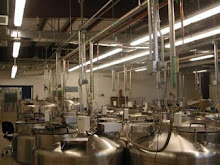When people think of cryogenic freezer systems or cryogenically freezing things, they immediately think of freezing dead bodies to preserve them for the future. However, cryogenics have advanced way past common science fiction plot lines. In actuality, cryogenics help us with every-day life.
Many food distributors use cryogenic freezing to preserve fruits and vegetables. Freezing preservation is important in retaining the quality of agriculture products over long storage and shipping periods. As methods of long-term preservation of agricultural products, freezing is far superior to canning and dehydration in regards to retaining taste and nutrient properties. Cryogenic freezing is cheaper than the dehydration or canning process, while using up less resources and time. When the overall cost is considered, freezing is the most cost-effective of any method of food preservation.
The frozen food market is one of the largest and most diverse sectors of the food industry. From TV dinners to frozen strawberries, the frozen food sector has a value of more than $27.3 billion in the United States alone. To keep this business alive, cryogenic freezer systems have played a large part in the refrigeration of food products. The success of cryogenic freezing comes from the elimination of heat from low temperature points towards points with higher temperatures. The cryogenic system achieves this through the use of liquid nitrogen and carbon dioxide to keep the products frozen and unable to spoil.
Remember the next time you go grocery shopping, there's a chance that some of the food in your grocery cart are made possible through the advancements of cryogenic freezer systems.
Subscribe to:
Post Comments (Atom)

No comments:
Post a Comment